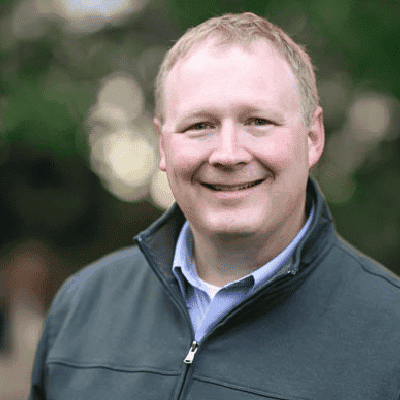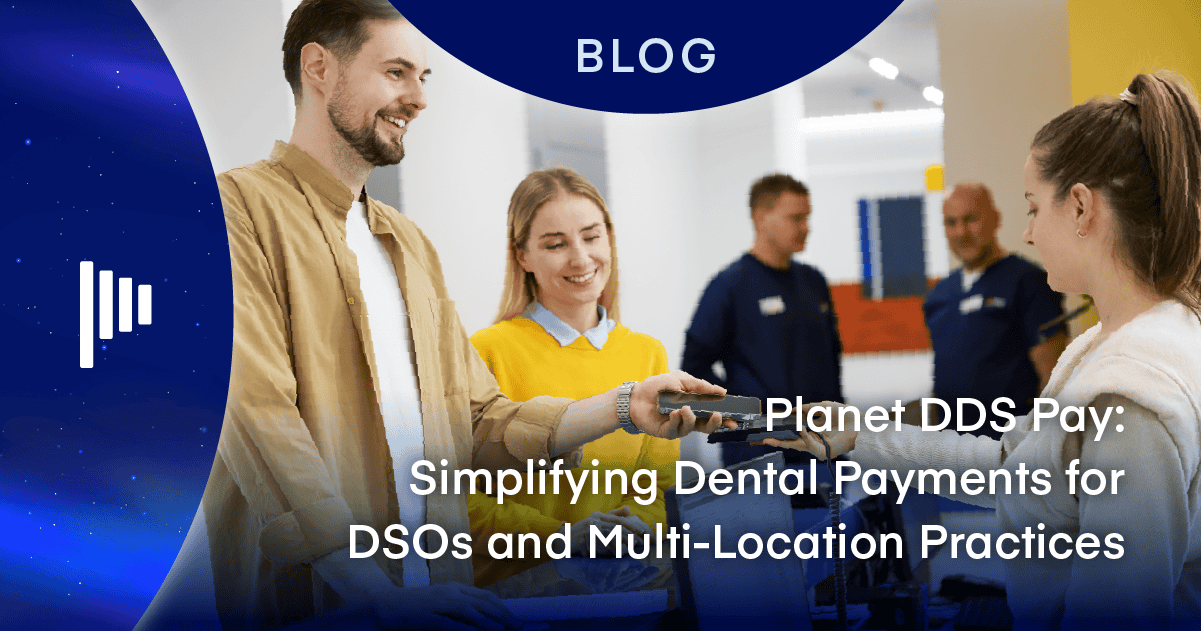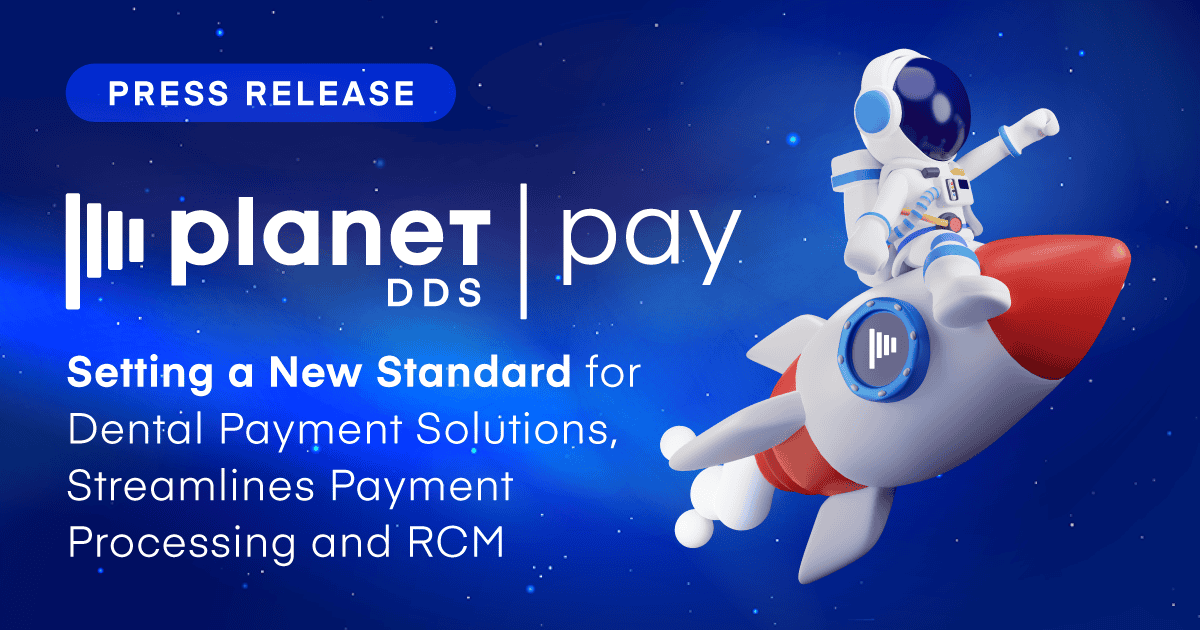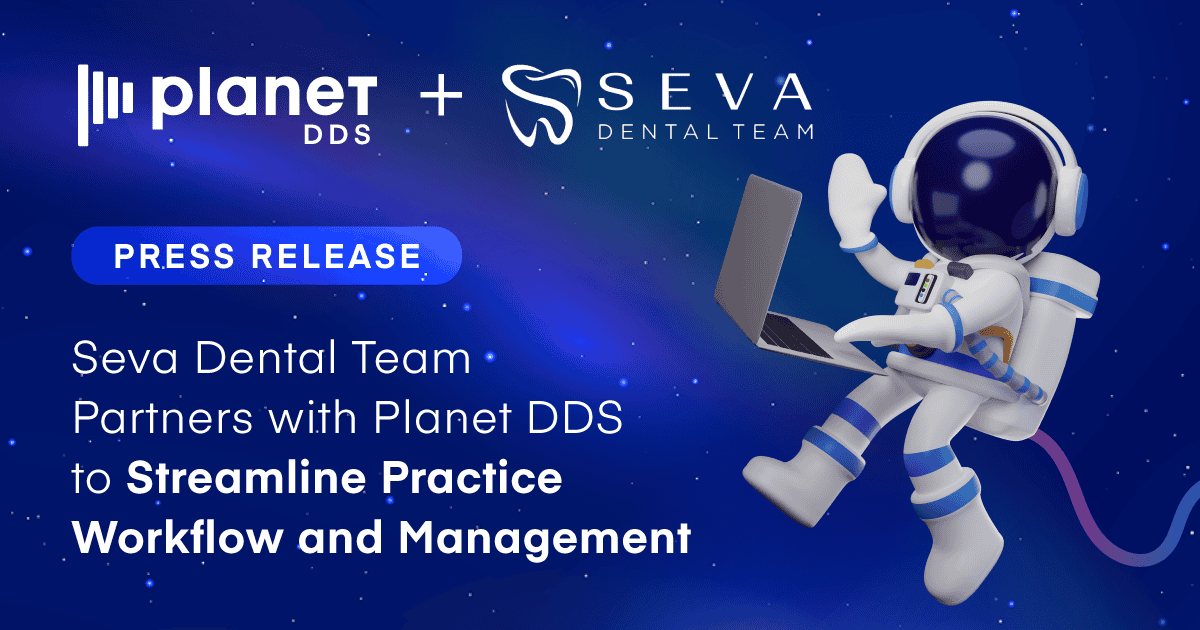Living Your Best Virtual Life
Dr. Powell, owner of Papillion Orthodontics, opened his practice only eight months before the pandemic forced him to go completely virtual.

Dr. Shawn Powell, Orthodontist and owner of Papillion Orthodontics in Papillion, NE, sits down with Cloud 9 Software to talk about virtual consultation in the age of the Coronavirus pandemic. Dr. Powell opened his practice only eight months before the pandemic forced him to go completely virtual and he tells us what made that possible.
Cloudcast length = 0:14:20
Blu Nordgren (BN): Hello and thank you so much for tuning into this Cloud 9 broadcast. My name is Blu Nordgren and I’m the Marketing Communications Manager here at Cloud 9 Software. Today, I have the great pleasure of speaking with one of our esteemed orthodontists on the topic of virtual consultation. I really hope that you enjoy learning a little bit more about how other doctors are currently utilizing virtual consultation tools. Now Dr. Powell, could you please introduce yourself to all of our listeners?
Dr. Shawn Powell (SP): Well, my name is Shawn Powell. I’m the owner and orthodontist of Papillion Orthodontics in Papillion, Nebraska. We’re a suburb of Omaha.
BN: Welcome Dr. Powell. I’m so glad you could join me today. Could you tell me why you think virtual consultation capabilities are so important right now?
SP: Well, I think now more than ever, obviously with a lot of practices, if not every practice being mandated to shut down for a period of time, it’s a way we have to stay connected with our current patients and our prospective patients. From our standpoint, the message we want to put out is not that, hey, we’re closed down, but hey, we’re open, we just can’t see you in the office right now. So, if you need us, we’re here, we’re your hometown orthodontist. We’re a resource and even though offices aren’t able to see patients in-office, we’re here to help and to do whatever we can virtually to get us through this time. So, that’s basically why we’ve embraced the virtual exam. And I added that as an option in our practice.
BN: What hurdles would you say you’ve faced in recent weeks? Obviously, everyone’s been really challenged in the current environment, but what about you?
SP: For us, obviously the closure of the office is a big hurdle. We’re trying to keep a business going and make it seem as normal as possible. Our family life is a little bit different now than it looked a few weeks ago with the kids not being in school. We have a seven year old and a five year old. And so, office time and school time and family time, everything’s blending somewhat together. We’re trying to make the best of the situation like everybody else is. And so, that’s been a hurdle.
In a way, our practice is a startup. We started from scratch eight months ago. We had no idea eight months into practice, we were going to shut down for six weeks. So, it’s not a scenario that really went through our mind, but here we are and it feels like we’ve gone back in time a little bit to where we were, essentially like we are now, we were open, but not seeing patients yet. And so, we’ve gone back to what we did before we opened as far as staying in touch with patients, trying to get new patients in the door so to speak, virtually during this time.
BN: Do you think as a startup that you’re positioned a little bit differently than say an orthodontic practice that’s been open for a little bit longer?
SP: I guess I can’t speak for those practices, I’ll speak for us. I think being a startup, I guess we want to look at it from the standpoint as an advantage. We obviously, eight months in aren’t at full capacity yet. So, we have plenty of capacity in our schedule. We feel like there’ll be pent up demand when all of this is lifted and we’re just making those changes and putting the preparations in order to be able to accommodate that need when it arises. So, I think from the standpoint if you had to tell me anywhere in your career or in your practice life, you would have to have this happen, this is probably the best time for us to have it happen, just from the sheer volume of patients that we need to reschedule. And so, I think from that point, I guess, we feel fortunate.
BN: Can you walk me through a new patient exam and the way that you do it right now with the virtual consultation?
SP: It doesn’t differ a whole lot from how we were doing it in office, with a few exceptions. It’s basically a three step process for us. We have a link on our website, a portal that patients can go into and they can upload their photos and information. That’s how they get in touch with us. We contact them and step two, we reach out to them, get a little more information. Just like we would with a regular, new patient call. We’ll get insurance information, demographic information, all those things that you need. Find a time that works for them virtually to meet with us, set up a time and then the third step then is doing the virtual consultation, which is just basically a face to face via the internet, going through the records that they sent us, the photos, discussing their treatment needs, treatment fees come in with their contract. All of those things can be done virtually so everything’s in place.
The obvious difference is, we can’t take a look firsthand in their mouth. We don’t have oftentimes x-rays available that we need for treatment planning. And so, patients are aware of that. They know that what we tell them is our best estimate and we know that mother nature might throw us a curve ball once we get all the other records. But I think, for the most part, I think people like to plan and they like to know what to expect. The other opportunity it gives us is to create some excitement. So, they have something to look forward to. People are craving getting out again and I think if we can just be a small part in creating that excitement for them to have something to look forward to once we can get them back in our office, I think that goes a long way too. And they’ve already met me that way. And so, I’m not a stranger when they do finally come in.
BN: I love that. That’s a really great way to look at it. Now, how are you leveraging the tools in Cloud 9 specifically to help you conduct new patient exams and virtual consultations?
SP: When we went through the process of deciding on what software company to go with for practice management, we looked at a lot of options. We felt the best fit for us was Cloud 9. We liked that it’s cloud based. Any internet connection can get you connected to your office, all the records, everything you need. And so, that’s a huge part of it.
We are able to upload photos from our patient portal that patients submit directly into the software. We can use that during our presentation, we use a screen much like this. We can pull up their records and discuss things. They can see firsthand what we’re talking about. I think a picture’s worth a thousand words, that has helped a lot. Having everything under one roof, as far as our contracts, our consent forms, all those things. Being able to pull those up, create the contracts, have them sign those and have everything in place before they come back in from a virtual standpoint has helped a lot. So, it’s been a good thing to have as long as we have our internet connection, which is still here. We can pretty much run the office from anywhere.
(06:22) BN: What advice would you give someone wanting to start offering virtual consultations at this time?
SP: I’m going to steal one from Nike I think here, just do it. So, it might seem intimidating, it’s really not as bad as you think it would be as long as you can get things set up and feel comfortable video conferencing. It’s pretty funny because a lot of parents now, when we call them to set up these appointments they’re like, “Okay, what do you want to do? Do you want to FaceTime it? Zoom it?” Our vocabulary has changed now. Zoom is an everyday word now. So, everybody’s kind of embracing it and I don’t think there’s anything to be worried about or scared of. I think you just need to do it and practice with it and just try it.
BN: What a message of inspiration. I love it. What’s a common myth of virtual consults that you might be able to debunk?
SP: I think somebody thinking about doing it might ask themselves, is it worth all the trouble? Is this virtual thing something that’s just going to be gone in a few weeks or months when we’re ready to go back to our offices? Is it worth going through the extra work? Is it more work? I don’t think it is. From our standpoint, we’re still collecting all the information we need. Like I said before, the only difference I think, is we can’t do the x-rays, we can’t do the clinical exam, but short of that, we can do most of what we were doing in office. I think the way we try to sell it to the patients is that if we can do all these things and have most of this, 90% of this is done before you ever step foot in our office. It’s really going to streamline things once you do come in.
And you already know what to expect. You know what our last few steps are to complete. We have a tentative treatment plan in place already. It’s going to be less time in the office when you are actually here for your patient exam and streamline things. Less time in the office, we need less time to be exposed to anything potential. So, we try to use that to our advantage.
I think maybe another myth was people aren’t going to want to do it. It’s too much of a hassle. It’s funny, a couple stories come to mind during this process these last few weeks. One mom said, “Yeah, let’s do it. Can I count this as science time for homeschool?” So, she had all her kids there. We did it as yeah, the virtual consultation, we also did it as, “Hey, this is Dr. Powell’s dental lesson time. Let’s learn a little bit about Ethan and the human dentition.” So, they embraced it that way, I think. So, we called it homeschool dental class that day.
Another patient, we have an active treatment. We checked in with our current patients to see if they were interested in doing virtual treatments. And she said, “Yes, I’d like to do it.” We asked, are you having any issues or anything? She said, “No, but you know what? I want to get in on this. Everybody’s doing Zoom. Everybody’s doing virtual, I want to” her quote was, “I would like to live my best virtual life.” So we said, “Sure, let’s do it.” And we checked in on her. I think she thought it was fun.
BN: Do you think that you’re going to continue using virtual consults even as your office begins to reopen slowly but surely?
SP: Actually, from day one with our office on our website, our website developer built the virtual consultation into our website. So, it’s something we’ve been doing and have had available. It’s just now becoming a little more prominent obviously, with the situation. But we were doing a little bit of it before this. I anticipate we’ll be doing it, some of it, probably not as much of it, but some of it after all this. And we’re going to keep the capability to do it. Now, our web developer, like I said, has a virtual consultation portal that we have where patients can upload their photos, it’s HIPAA compliant. And so, we will continue probably to utilize that if that’s something our patients want.
BN: Are there resources that have really helped you on your journey to becoming set up for virtual consultations?
SP: First couple of things. One, is our software being cloud-based. With Cloud 9 we can pull up, like I said, we can run our office virtually. We don’t have to be in the office to run the office. I think another big thing that just helped us out is voice over IP phones. We can take our phones with us anywhere we go. And so, we don’t actually have to be in the office physically to be able to run the office. Between our software and our phones, we can do it from about anywhere. Patients don’t even know we’re not in the office a lot of times where it’s coming from our phone number, the phone calls are, they’re calling into our office phone number and we’re able to meet their needs that way. So, those are two big things that have really helped us out.
I think our staff, while we have a small staff right now as a startup, everybody has willingly embraced the changes. Everybody has realized when we need to shift course a little bit and maybe reevaluate how we’re doing things, everybody’s on board with it, which has helped a lot. We have a very experienced staff who has done things one way a long time, but is always open to making changes. And so, I think the culture you have in your office with embracing change, I think is important, and especially during these times. And I think we’ve been blessed that way with the right team.
We have a consultant that we work with. Their team has been behind the scenes, working tirelessly to help us out, help us adapt to what we’re doing. And so, I guess I’d have a shout out, to Anthony Chi and her team. They’ve been on the forefront working night and day during this time to get the practices, resources they need and to listen and to get us what we need to keep moving forward. So, like I said, we haven’t seen patients in our office for the last six weeks, but it doesn’t really feel like we’ve been closed. We’ve been open. We’ve been just doing things a little differently than what we did before. But we’re hoping to go back to the old way too soon.
BN: Yeah. But that sounds phenomenal. I’m so glad to hear that been going that way and that it feels like you’ve been open. What are some specific roadblocks that people should watch out for if they’re going to be doing virtual consultations?
SP: I think one is just embracing it. Have a positive attitude, be willing to try it at least. I think keeping an open mind is big. If somebody suggests, hey let’s try this, as crazy as it may seem, do it. What’s the worst that could happen?
BN: What’s been the biggest surprise to you in the last few weeks and why?
SP: I think I’ve been surprised with how much there really was to do and how fast the time has really gone. In a lot of ways it seems like it’s been a long time since we’ve seen patients. And in another breath that you look back and it’s like, oh, has it already been that long? It’s a weird thing, I guess. So, I think just trying to maintain a normal routine has been important as much as possible. And we’ve been coming into the office. We’re fortunate in Nebraska we haven’t had the shelter in place orders like a lot of states have had. So, we’ve been able to come and go as we will at the office, as we please and it’s enabled us to actually be in the office. And maybe that’s made it feel a little more normal.
We made a concerted effort to stay in touch with our patients. Every one of our active patients, prospective patients has heard from us probably more than one time during this period. I’ve made an effort to work the phones myself. I think what people want more than anything is reassurance that everything’s going to be okay and that their treatment is going well and that’s what we’ve tried to do.
BN: Thank you so much, Dr. Powell. I really appreciate the time you’ve taken to speak with me today. For any listeners who may have questions for Dr. Powell after listening to this interview or anyone who might like to speak with him further about virtual consultations, you are welcome to reach out to him at {click here to reveal}, that’s {click here to reveal}.
Thank you all so much for listening. And if you have any suggestions for future topics for us to cover, please don’t hesitate to send them to me at {click here to reveal}, that’s {click here to reveal}.



